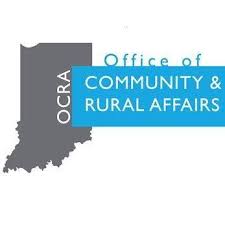
“Governor Holcomb and I have long touted our thriving rural cities and towns, and our commitment to these communities has not wavered, even while coping with the onset of COVID-19,” said Lt. Governor Suzanne Crouch. “I am proud of the collaboration and efforts that went into creating this framework and am confident that this is another step forward in taking the State of Indiana and all the communities we serve to the Next Level.”
In her quest to support the people, families, businesses and communities that represent the heart of rural Indiana, Lt. Governor Crouch challenged her family of business to delineate and put into action a list of key priorities in response to the challenges presented by COVID-19. This required each agency to work with their university partners to take stock of their current capabilities and then find new ways to create a more integrated system of support for rural Indiana. The end result provides a framework for each agency to utilize in the response to and recovery from COVID-19 in rural communities.
Key priorities and actions for each agency include:
Office of Community and Rural Affairs
- Renew the agency’s focus by engaging in regional and local discussions
- Facilitate and advance equitable policies that support long-term economic growth for businesses and populations disproportionately impacted by the pandemic
Indiana Housing and Community Development Authority (IHCDA)
- Implemented rental assistance for COVID-impacted families
- Launched the $40 million Indiana COVID-19 Rental Assistance Program to provide emergency rental assistance, decrease evictions and increase housing stability by helping renters whose income has been adversely affected by COVID-19
Indiana State Department of Agriculture (ISDA)
- Assess and mitigate the impacts of COVID-19 on Indiana’s agriculture and food system
- Partner with state agencies, grocery retailers and associations, transportation and volunteer organizations to identify short and long term options for reducing food insecurity
Indiana Broadband Office (IBO)
- Build upon the existing Broadband Ready Communities program
- The Indiana Broadband Office will now manage the Broadband Ready Community Program to provide for the creation of a broader digital inclusion plan to ensure that broadband investment is fully leveraged and sustainable across Indiana
Indiana Destination Development Corporation (IDDC)
- Motivate consumer activity
- Elevate and promote the Hoosier Hospitality Promise (HHP) in partnership with the Indiana Restaurant and Lodging Association and the Indiana Tourism Association
Each agency has already taken significant steps to ensure the key building blocks are in place to address COVID-19 specific to their focus areas. Over the coming months, agency leaders will continue their efforts to ensure stakeholder engagement and interagency collaboration.
“The state has long-recognized the critical role rural Indiana plays in our vitality and well-being,” said David R. Terrell, Executive Director, Ball State Indiana Communities Institute. “Lt. Governor Crouch is providing stellar leadership by asking the agencies in her Family of Business to develop these plans for a rural recovery.”
“The challenges facing rural Indiana communities as a result of COVID-19 are both significant and diverse,” said Bo Beaulieu, Ph.D., Professor of Rural and Regional Development, Purdue Center for Regional Development. “I applaud Lt. Governor Crouch for mobilizing the Family of Business to work together in building an integrated and impactful suite of programs that will help rural places and businesses survive and thrive in the months ahead.”
To view the entire Rural Road to Recovery document, including each agency-specific action plan, click here.
